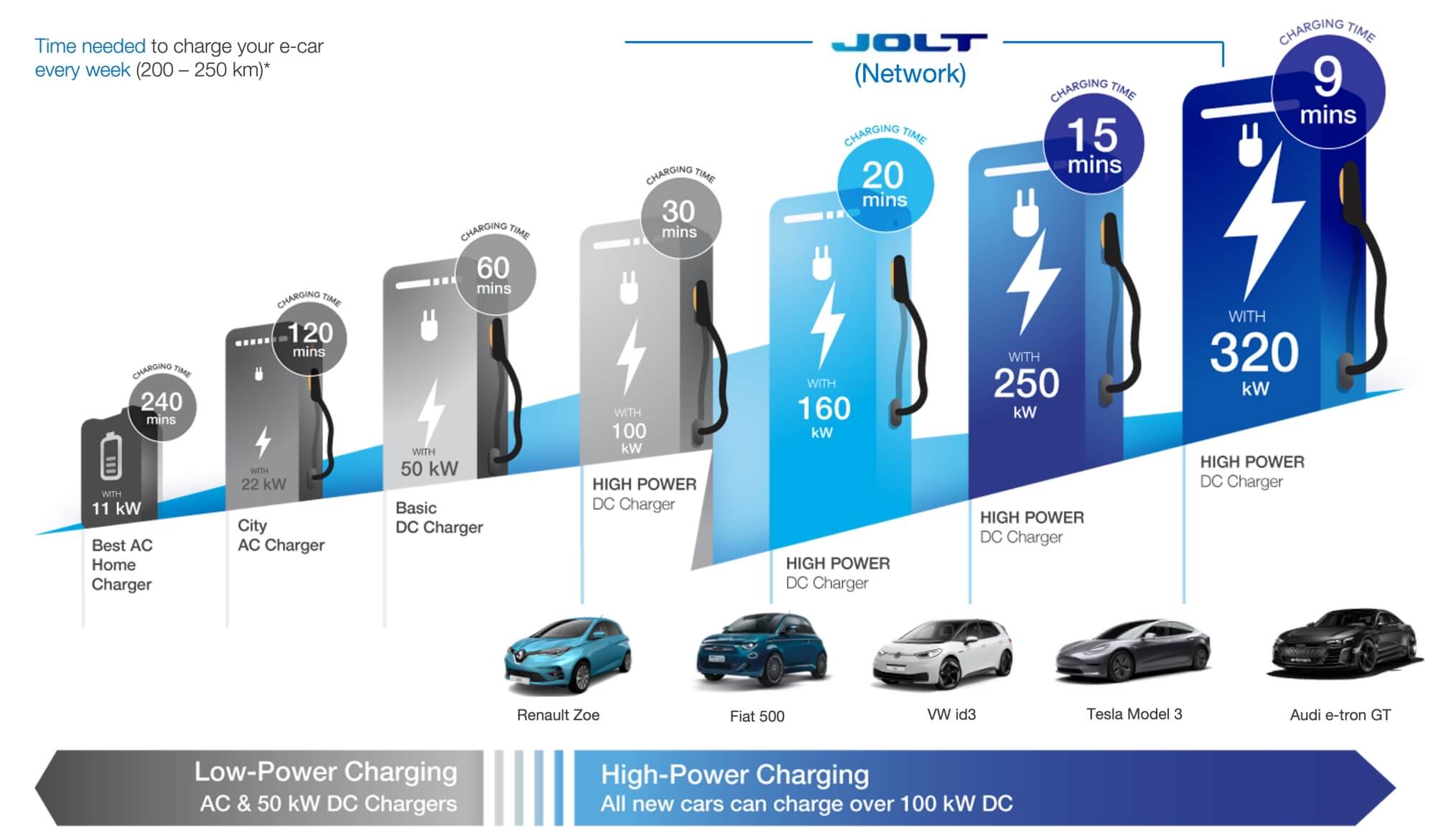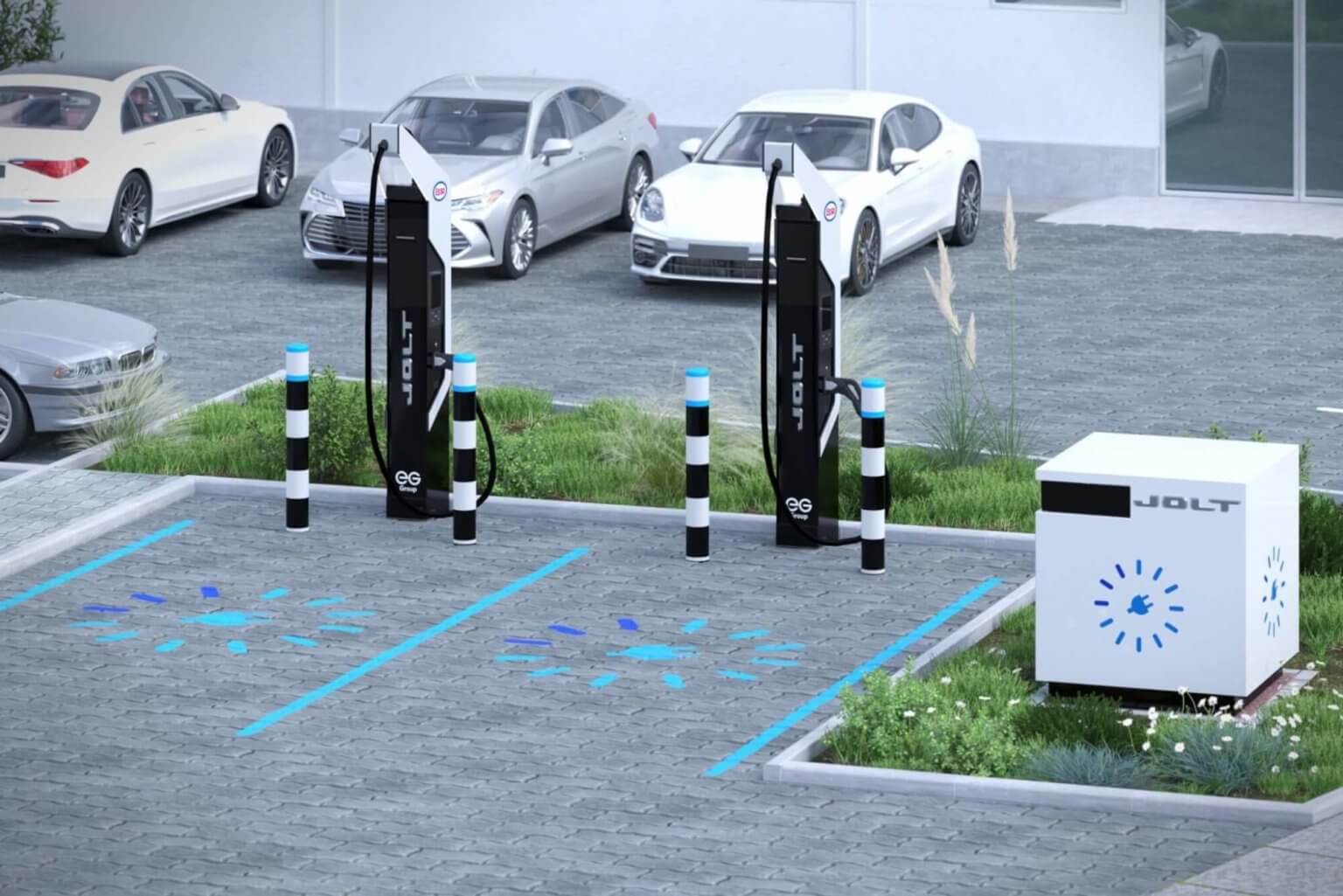Do you know that whenever you’re charging an electronic device, such as your smartphone, the plug is converting AC power to DC? So, what does that mean in terms of electric vehicles (EV): AC stands for alternating current, and DC stands for direct current. These are the two kinds of “fuels” which can empower electric vehicles.
AC chargers have charging powers of up to 22 kW. They’re best for charging cars for several hours or even overnight. In general, the charging power and time also depend on the charged model of the EV.
DC chargers start from 50 kW and up to currently 350 kW. For example, you can charge 100 km in approximately 30 minutes.
And what’s ultra-fast charging? Everything at or above 150 kW. With JOLT chargers you can charge the next 100 km in 5 minutes – which is 6 times faster.
Let’s dive deeper.
Main Differences Between AC, DC, and Ultra-Fast Charging

EV charging may seem complicated to newcomers who have zero experience with this new generation of “greener” cars. Firstly, you should learn that AC charging is the most popular and cheapest method at the moment, but it takes the longest time to charge your car. Ultra-fast charging is, by all means, the fastest and most optimal way to get your vehicle rolling for a long ride. It will, however, cost you a lot more.
AC Charging for Electric Vehicles
AC is the power that always comes from the grid and the one that most chargers nowadays use. However, the batteries in electric cars can only store DC power, so it’s the car’s job to change the format. In most electronic devices, a converter is built into the plug, and that’s why EV charging takes longer and tends to be more economical. This is currently the most common charging method for electric vehicles. The usual charging speed is 22 kW, so it’s ideal for charging at home or work as it requires more time.
However, you should note that every onboard charger has a maximum capacity, depending on the car and the power available to the charging infrastructure.
DC Charging for Electric Vehicles
The main difference between AC and DC charging is the location of the AC power conversion. AC chargers need an external DC-converter, whereas DC chargers have the converter built inside the charger itself. This means that the DC charging method doesn’t need an onboard charger to convert power.
Even though AC charging is more popular, a DC charger has more advantages: it’s faster and feeds power directly to the vehicle’s battery. This method is common near highways or public charging stations, where you have limited time to recharge.
Why Ultra-Fast Charging is Best
When it comes to ultra-fast charging, the general charging speed exceeds 150 kW – this is about 5 times faster than both AC and standard DC chargers. One of the most significant benefits of ultra-fast charging is that it offers room for upgrades: the devices are often modular, so they could be expanded with growing demand. The number of vehicle models that can accept higher power is expected to increase in the near future.
The most significant advantage of ultra-fast charging is undoubtedly the time saved – it’s expected to drop below 15 minutes for 80% charging. Our chargers, for instance, take only 5 minutes to charge your car for the next 100 km.



